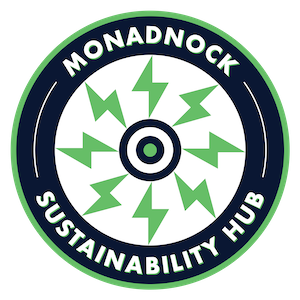By MSH Board Member, John Kondos.
Originally Published in The Monadnock Shopper News, Green Monadnock column, Fall 2020.
Many of us think of Hawaii as paradise, dreaming of going or returning. For those seeking guidance on how to get to 100% clean energy, consider this.
In March 2011, a massive 9.0 earthquake resulted in Japan closing its nuclear plants and shifting to oil-fired generators, raising global oil prices. Since Hawaii relied on oil for 80% of electricity generation, the already high electricity rates soared. For relief, customers installed cost-competitive solar power systems. Along with utility scale solar, Hawaii became a leader in solar capacity per person.
A report from Rocky Mountain Institute (RMI), Powering Paradise, presents Hawaii’s energy transition— of legislative accomplishments, grassroots, utility and regulatory efforts to achieve a low-carbon energy system. In 2015, Hawaii became the first state to proclaim a 100 percent renewable energy target. Key lessons for others pursuing energy reform are: first, Hawaii embodies a willingness to try, consistently pushing boundaries. Missteps are adjusted by rapid feedback loops which accelerate rather than impede progress toward solutions. Second, Hawaii consistently engages stakeholders to crowdsource invaluable local wisdom, draw from national and international experience, and ensure support for actions that are collaboratively developed to achieve benefits for everyone. Hawaii is refining solar and storage compensation structures, utility programs, and policies to ensure that the full spectrum of capabilities are harnessed. ‘Paradise’ is updating its utility regulations in a manner that encourages a viable utility business that fulfills customer and societal needs guided by the state’s clean energy policies.
Here in NH, we’re experiencing another winter with abnormally warm temperatures, the warmest January since global records began over 140 years ago, more freezing rain and less reliable snow cover. We need to acknowledge the science and warnings to act before snow cover is rare here as it already is to our south meaning more insect borne diseases, species losses, heat waves and severe storms.
To better understand solutions to this unfolding crisis, consider a new interactive tool, the En-ROADS simulator, which shows that humanity could still meet the goals of keeping temperature increases below 2.8 degrees F or 1.5 degrees C by 2100 if we get to work quickly. Fortunately, some Monadnock Sustainability Hub (MSH) folks have taken the month-long course to facilitate EN-ROADS workshops and games. Developed by the MIT Sloan School of Management and Climate Interactive it enables participants to pull levers to see their impact on reducing the global temperature. If you’d like to host or participate in a workshop please contact Mary Ewell at mehinnh@gmail.com.
Over 30 NH towns including several in our area will have warrant articles recommending the ‘Carbon Cash-Back’ solution. The most cost-effective way to reduce pollution is to put a price on it, and the most equitable thing to do with the money collected is to compensate the people being harmed by the pollution. The Carbon Cash-Back solution charges fossil fuel producers and importers a steadily increasing pollution fee and gives all the money collected to all families equally. This market-based approach protects family budgets, does not grow government, and is supported by members of both parties. This corrects the market failure of dumping greenhouse gasses into our air for free. By taxing what we burn not what we earn, we’ll unleash American entrepreneurs to accelerate the shift to cleaner energy. There’s a bipartisan bill that puts money in every household budget and brings greenhouse gas emissions down 90 percent by 2050. US House bill 763, the Energy Innovation and Carbon Dividend Act puts a price on carbon and gives the cash back to households as dividends.
This is a great start, as the En-ROADS simulator shows, but time is running out for enough actions to slow sea level rise. In the Financial crisis of 2008, people lost their homes but the homes didn’t disappear. They are occupied today. If sea levels rise, many neighborhoods will be gone for good. How many homes can we afford to lose? How many of these homeless people will Keene absorb?
About the Author
John Kondos is a founding member of the Monadnock Sustainability Hub, formerly the Monadnock Sustainability Network (greenmonadnock.org) whose mission is to promote credible, sustainable practices in the region and the Monadnock chapter of Citizens Climate Lobby.
